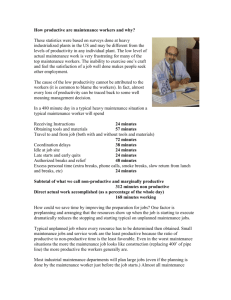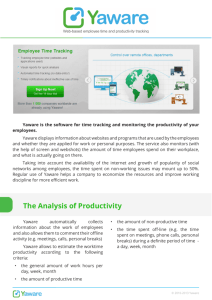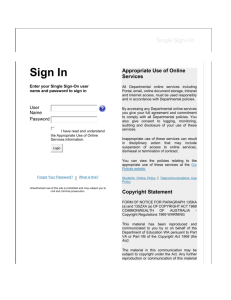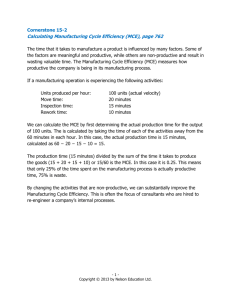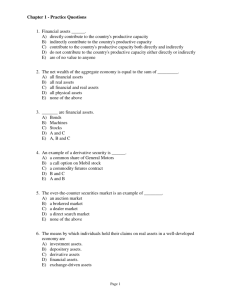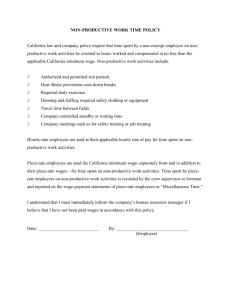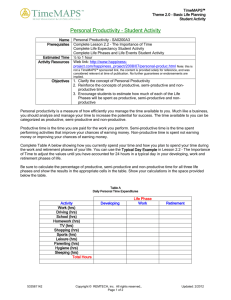Productive and Non-Productive Hours – The New Normal
advertisement
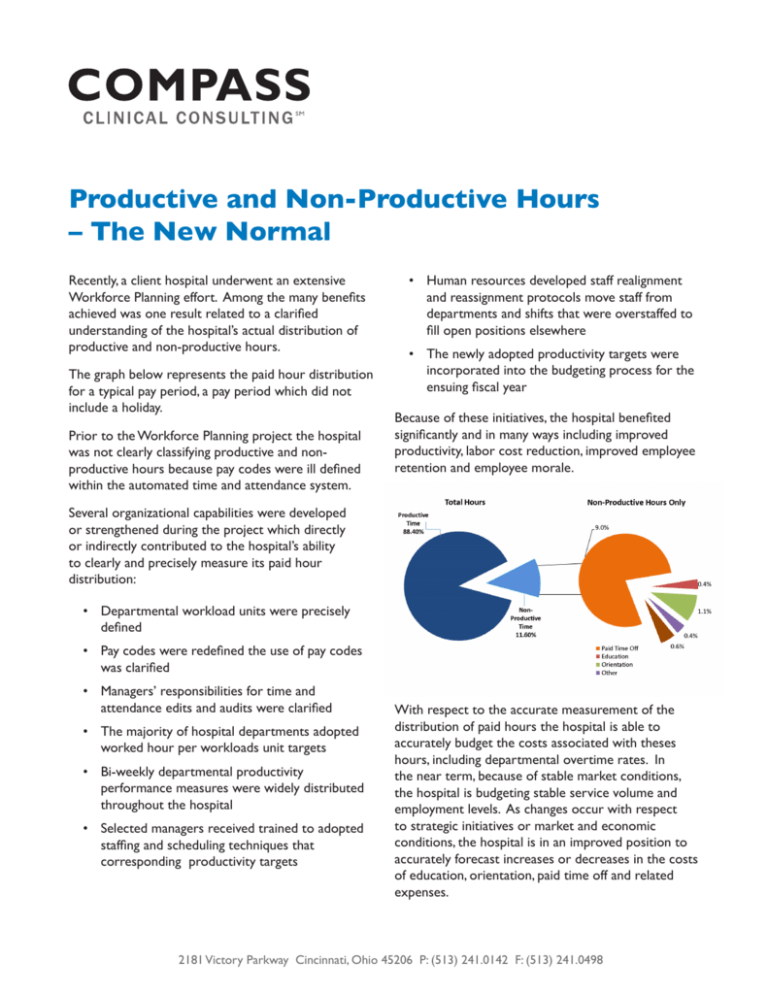
Productive and Non-Productive Hours – The New Normal Recently, a client hospital underwent an extensive Workforce Planning effort. Among the many benefits achieved was one result related to a clarified understanding of the hospital’s actual distribution of productive and non-productive hours. The graph below represents the paid hour distribution for a typical pay period, a pay period which did not include a holiday. Prior to the Workforce Planning project the hospital was not clearly classifying productive and nonproductive hours because pay codes were ill defined within the automated time and attendance system. • Human resources developed staff realignment and reassignment protocols move staff from departments and shifts that were overstaffed to fill open positions elsewhere • The newly adopted productivity targets were incorporated into the budgeting process for the ensuing fiscal year Because of these initiatives, the hospital benefited significantly and in many ways including improved productivity, labor cost reduction, improved employee retention and employee morale. Several organizational capabilities were developed or strengthened during the project which directly or indirectly contributed to the hospital’s ability to clearly and precisely measure its paid hour distribution: • Departmental workload units were precisely defined • Pay codes were redefined the use of pay codes was clarified • Managers’ responsibilities for time and attendance edits and audits were clarified • The majority of hospital departments adopted worked hour per workloads unit targets • Bi-weekly departmental productivity performance measures were widely distributed throughout the hospital • Selected managers received trained to adopted staffing and scheduling techniques that corresponding productivity targets With respect to the accurate measurement of the distribution of paid hours the hospital is able to accurately budget the costs associated with theses hours, including departmental overtime rates. In the near term, because of stable market conditions, the hospital is budgeting stable service volume and employment levels. As changes occur with respect to strategic initiatives or market and economic conditions, the hospital is in an improved position to accurately forecast increases or decreases in the costs of education, orientation, paid time off and related expenses. 2181 Victory Parkway Cincinnati, Ohio 45206 P: (513) 241.0142 F: (513) 241.0498
